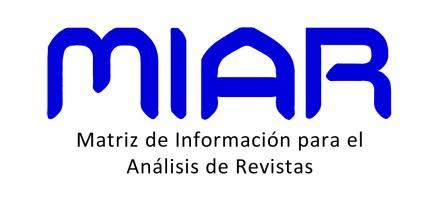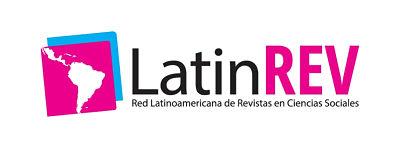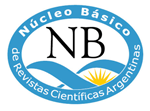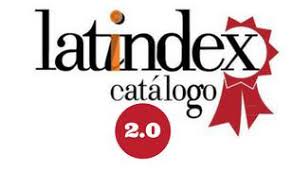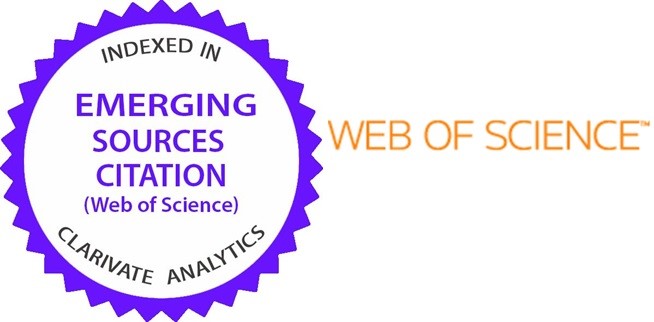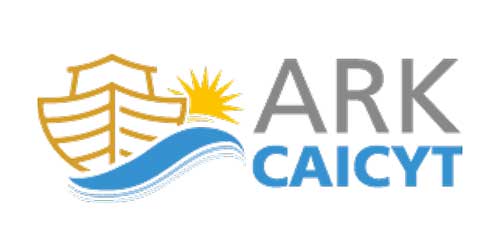http://fh.mdp.edu.ar/revistas/index.php/etl/about/editorialPolicies#peerReviewProcess
Resumen
En 1888, Aby Warburg comenzó a escribir los Grundlegend Bruchstücke (fragmentos), tratando de sintetizar sus reflexiones teóricas y los contornos
de sus estudios sobre el Renacimiento. Este trabajo duró hasta 1905, produciendo un compendio a modo de diario que contenía bocetos, definiciones
conceptuales, aforismos y referencias bibliográficas que pretendía presentar como un libro sobre teoría de la imagen. Trayendo a la discusión esta importante fuente, aunque aún no ampliamente conocida, este artículo analiza el pensamiento teórico de Warburg en sus contornos y proceso de construcción. Pretendemos debatir el lugar de los fragmentos en su reflexión teórica centrándonos en tres temas generales: I) el proceso de trabajo de los fragmentos; II) sus elementos formales; III) su sistematicidad. Por último, argumentamos que, aunque falte a los fragmentos el estricto rigor y de la sistematicidad técnica, ellos no dejan de presentarse como una rica reflexión teórica, una obra con un notable vigor filosófico.
Palabras clave
Texto completo:
PDF (English)Referencias
Buschendorf, Bernhard. “Zur Begründung der Kulturwissenschaft”. Edgar Wind: Kunsthistoriker und Philosoph, organized by Horst Bredekamp et al., Akademie, 1998, pp. 227-248.
Calabrese, Omar. “La geografia di Warburg: note su linguistica e iconologia”. Aut aut, nº 199-200, 1984, pp. 109-120.
Ghelardi, Maurizio. Aby Warburg et la “lutte pour le style”. L’écarquillé, 2016.
Gombrich, Ernst. Aby Warburg: an intellectual biography. Phaidon, 1986.
Grimm, Jacob, and Wilhelm Grimm. Deutsches Wörterbuch. 16 vols. S. Hirzel, 1854-1961.
Hildebrand, Adolf von. Das Problem der Form in der bildenden Kunst. Heitz, 1905.
Hirth, George. Energetische Epigenesis und epigenetische Energieformen. Hirth, 1898.
Hönes, Hans. “Warburg’s positivism: confessions of a truffle pig”. Oxford Art Journal, vol. 41, nº 3, 2018, pp. 361-379.
Hönes, Hans, and Ulrich Pfisterer. “Nachwort: Der ‘kleine Antennerich’ – Kunstpsychologie als Selbsterkundung”. Fragmente zur Ausdruckskunde, De Gruyter, 2015, pp. 321-351.
Ikonomou, Eleftherios, and Harry Mallgrave. “Introduction”. Empathy, form and space, The Getty Center for the History of Art and the Humanities, 1994, pp. 1-85.
Müller, Susanne. “Aby Warburgs ‘Grundlegende Bruchstücke zu einer pragmatischen Ausdruckskunde’”. Cassirer Studies, vol. 5-6, 2012-2013, pp. 65-75.
Müller, Susanne. “Das Wasserzeichen des Gedankens”. Frammenti sull’espressione, Edizioni della Normale, 2011, pp. 7-20.
Müller, Susanne, and Giovanna Targia. “Die ‘Bruchstücke’ Aby Warburgs und die Frage des Stils”. L’idée du style dans l’historiographie artistique, organized by Antonio Brucculeri and Sabine Frommel, Campisano, 2012, pp. 199-213.
Roeck, Bernd. Der junge Aby Warburg. C. H. Beck, 1997.
Rampley, Matthew. “Zur Vischer-Rezeption bei Warburg”. Friedrich Theodor Vischer: Leben – Werk – Wirkung, organized by Barbara Potthast and Alexander Reck, Carl Winter, 2011, pp. 299-320.
Sauer, Martina. “Warburg und die Natur(-wissenschaft)”. Visual Past, vol. 5, 2018, pp. 261-298.
Schlegel, Friedrich. Lucinde and the fragments. Translated by Peter Firchow, University of Minnesota, 1971.
Schoell-Glass, Charlotte. “‘Contact bekommen’: Warburg schreibt”. Schlangenritual, organized by Cora Bender et al., Akademie, 2007, pp. 283-296.
Suzuki, Márcio. “A gênese do fragmento”. O dialeto dos fragmentos, Iluminuras, 1997, pp. 11-18.
Targia, Giovanna. “Der ‘Zusammenhang zwischen Natur- und Geisteswissenschaft’”. Aby Warburg und die Natur, organized by Frank Fehrenbach and Cornelia Zumbusch, De Gruyter, 2019, pp. 9-31.
Vischer, Robert. Über das optische Formgefühl. Leipzig: Hermann Credner, 1873.
Vollgraff, Matthew. “The archaeology of expression: Aby Warburg’s Ausdruckskunde”. Aby Warburg und die Natur, organized by Frank Fehrenbach and Cornelia Zumbusch, De Gruyter, 2019, pp. 121-148.
Warburg, Aby. Briefe: 1886–1929. 2 vols. Organized by Michael Diers and Steffen Haug, De Gruyter, 2021.
Warburg, Aby. Fragmente zur Ausdruckskunde. Organized by Hans Hönes and Ulrich Pfisterer, De Gruyter, 2015.
Warburg, Aby. Frammenti sull’espressione. Organized by Susanne Müller, Edizioni della Normale, 2011.
Warburg, Aby. “Giordano Bruno”. Cassirer Studies, vol. 1, 2008, pp. 17-58.
Warburg, Aby. Tagebuch der Kulturwissenschaftlichen Bibliothek Warburg. Organized by Karen Michels and Charlotte Schoell-Glass, Akademie, 2001.
Warburg, Aby. The renewal of pagan antiquity. Translated by David Britt, Getty Research Institute, 1999.
Warburg, Aby. Werke in einem Band. Organized by Perdita Ladwig et al., Suhrkamp, 2010.
Wedepohl, Claudia. “Pathos – Polarität – Distanz – Denkraum”. Warburgs Denkraum: Formen, Motive, Materialien, organized by Sabine Flach et al., Wilhelm Fink, 2014, pp. 17-49.
Warburg, Aby. “Why Botticelli? Aby Warburg’s search for a new approach to Quattrocento Italian art”. Botticelli past and presente, organized by Ana Debenedetti and Caroline Elam, UCL, 2019, pp. 183-202.
Weigel, Sigrid. “Von Darwin über Filippino zu Botticelli ... und ... wieder zur Nymphe”. Warburgs Denkraum: Formen, Motive, Materialien, organized by Sabine Flach et al., Wilhelm Fink, 2014, pp. 143-180.
Wessely, Ignanz. “Kunstgeschichte”. Allgemeine Encyklopädie der Wissenschaften und Künste, organized by August Leskien, vol. 40, Brockhaus, 1887, pp. 259-261.
Zumbusch, Cornelia. Wissenschaft in Bildern: Symbol und dialektisches Bild in Aby Warburgs Mnemosyne-Atlas und Walter Benjamins Passagen-Werk. Akademie, 2004.
Enlaces refback
- No hay ningún enlace refback.

Este obra está bajo una licencia de Creative Commons Reconocimiento-NoComercial-CompartirIgual 4.0 Internacional.
 | Estudios de Teoría Literaria. Revista digital: artes letras y humanidades es una revista fundada por el Grupo de Investigaciones Estudios de Teoría Literaria y radicada en el Centro de Letras Hispanoamericanas (CELEHIS) de la Facultad de Humanidades de la Universidad Nacional de Mar del Plata. Correo electrónico: estudiosdeteorialiteraria@gmail.com | Web: http://fh.mdp.edu.ar/revistas/index.php/etl | LinkedIn: https://www.linkedin.com/in/estudios-de-teoria-literaria/ | Instagram: https://www.instagram.com/revistaestudiosdeteoria/ | Facebook: estudiosdeteorialiteraria | ISSN 2313-9676 (Versión en línea)
|
La Dirección no se responsabiliza por las opiniones vertidas en los artículos firmados. | |
DIRECTORIOS Y CATÁLOGOS QUE INCORPORAN LA REVISTA | |||
SISTEMAS DE INDIZACIÓN | |||
BASES DE DATOS | |||
OTROS INDICADORES | |||


 se encuentra bajo
se encuentra bajo 



